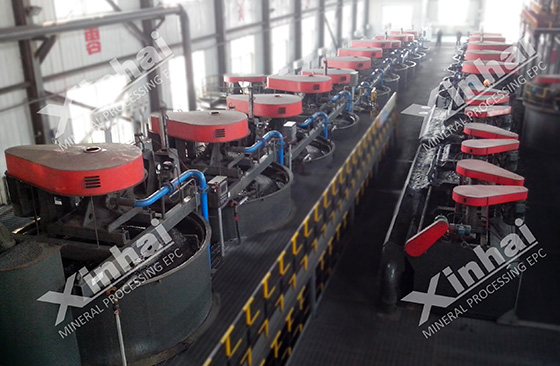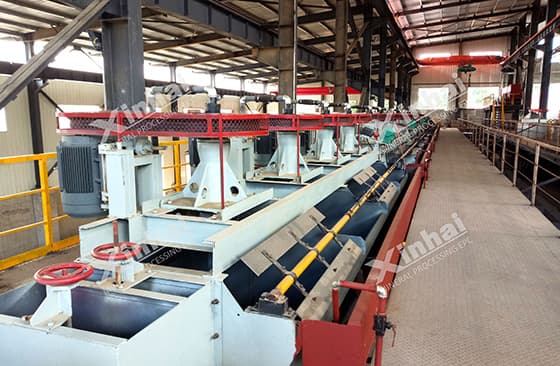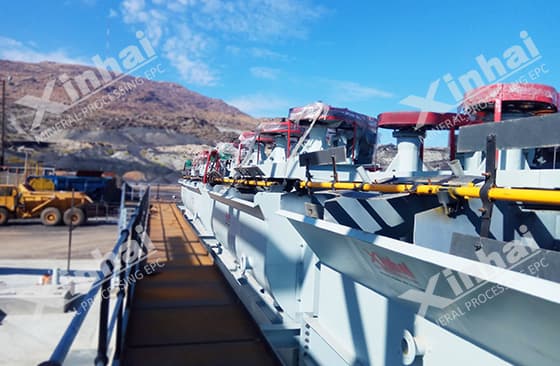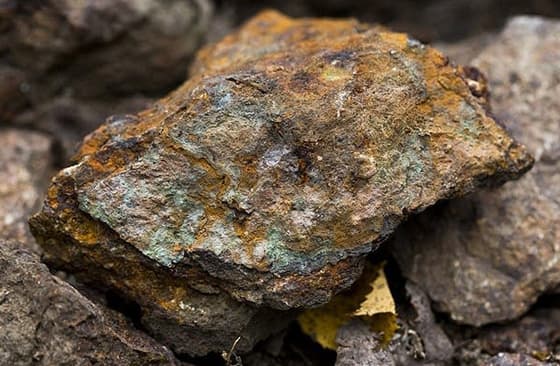
As an important metal, nickel has good ductility, corrosion resistance and ferromagnetism, and it has been widely used in steel, nickel-based alloys, electroplating and batteries. The main source of nickel is copper-nickel sulfide ore, silicate nickel ore and laterite nickel ore. At present, the development of nickel resources is mainly based on copper-nickel sulfide ore. Minerals are easy to muddy and have good buoyancy, and there are problems such as low nickel recovery rate, high magnesium-containing gangue, and difficult separation of copper and nickel. Therefore, the following will introduce the flotation separation technique and technical difficulties.

According to the properties of copper-nickel sulfide ore, mineral composition and metal content of copper-nickel ore, the flotation separation technique used is also different, mainly including priority flotation separation process, mixed flotation separation process, pre-selection and desliming in flotation process, stage Technologies such as grinding and flotation processes.
Priority flotation separation technique
The natural floatability of copper in copper-nickel sulfide ores is better than that of nickel, and preferential flotation is suitable for copper-nickel sulfide ores with low nickel content and simple symbiosis of copper-nickel mineral monomers. After the preferential flotation process, the copper concentrate with low nickel content can be obtained directly. The preferred process flow is relatively simple and the cost is low. The disadvantage of this process is that part of nickel will be suppressed during copper flotation, and it is not easy to activate nickel during flotation. Nickel is easily mixed into copper concentrate, causing nickel to be lost in copper concentrate, reducing nickel recovery and affecting production efficiency.

Mixed flotation separation technique
Copper-nickel mixed flotation includes two types: one is mixed flotation-direct separation process, first mixed flotation copper-nickel ore, mixed concentrate direct flotation separation; the other is first mixed flotation + electric furnace smelting and then high nickel matte separation process. At present, the ore concentrator mostly adopts the mixed flotation-direct separation process, which can obtain a higher recovery rate of copper and nickel.
Desliming-flotation separation technique
Copper-nickel sulfide ore is rich in serpentine, talc, olivine and other magnesium-containing silicate gangue minerals, which are soft and have good natural buoyancy. The effects are:
① During the grinding process, it is easy to muddy, covering the surface of target minerals such as copper and nickel, interfering with the function of target minerals and collectors;
②Entrainment into the concentrate through foam entrainment, resulting in high magnesium oxide in the concentrate and lowering the grade of the concentrate;
③A large amount of gangue minerals interact with collectors, consume chemicals, increase costs, and reduce economic benefits.
Desliming before flotation can remove muddy gangue minerals, greatly reduce magnesium-containing gangue minerals, can reduce the amount of collectors and inhibitors.

Stage grinding and flotation separation technique
Due to the alteration of some ores in the copper-nickel sulfide ore during the ore-forming process, and the associated relationship between the target minerals such as copper and nickel and the gangue minerals is complicated, it is difficult to make the gangue minerals and useful minerals dissociate by one-stage grinding process. Adopting the stage mill flotation process can increase the degree of mineral dissociation and improve the recovery rate.
1. Copper-nickel minerals are difficult to dissociate
The composition of copper-nickel sulfide ore is complex, and minerals with certain structures will affect the recovery of copper-nickel ore. For example, nickel-rich pentlandite is closely related to metal sulfide minerals such as chalcopyrite and pyrrhotite, and it is difficult to dissociate fully when finely ground. This part of pentlandite is likely to enter the tailings along with gangue minerals , reducing nickel recovery.

2. Magnesia-containing gangue minerals are easy to mix
Copper-nickel sulfide ore is rich in magnesia-containing gangue minerals such as talc and serpentine, which are easily mixed into the concentrate to cause excessive magnesium oxide content, resulting in excessive viscosity of the slag phase and nodules in the furnace hall, which affect normal production. Therefore, nickel Magnesium reduction in concentrate is an important and difficult point in the separation of copper-nickel sulfide ore.
3. Chemical changes during the grinding and sorting process
Copper-nickel ore deposits are mostly mafic-ultramafic rocks and altered rocks. The target minerals are unevenly distributed and need to be finely ground to dissociate monomers, resulting in fine-grained talc and serpentine, which not only affects the slurry Viscosity and separation process parameters, and the contact of iron impurities and sulfide minerals in the process affect the surface potential, change the ion and particle surface charge in the pulp and deteriorate the flotation process.

4. The mutual content of nickel and copper is relatively high
During the copper-nickel separation process, because the copper-nickel minerals are symbiotic with each other, and the embedded particle size is fine, the nickel minerals that are not fully dissociated easily enter the copper concentrate and reduce the recovery rate of nickel; Pyrite, whose floatability is close to that of pentlandite, is easy to enter the mixed concentrate during flotation.
The above are the flotation separation technique and technical difficulties of copper-nickel sulfide ore. In actual production, the appropriate beneficiation technology should be selected according to ore characteristics and production requirements. There are other difficulties in the flotation of copper-nickel sulfide ore. Xinhai Mining recommends to find experts to conduct ore beneficiation tests and flotation process design to ensure the improvement of the grade and recovery rate of copper-nickel concentrate.
To find out more about our products and solutions, please fill out the form below and one of our experts will get back to you shortly.